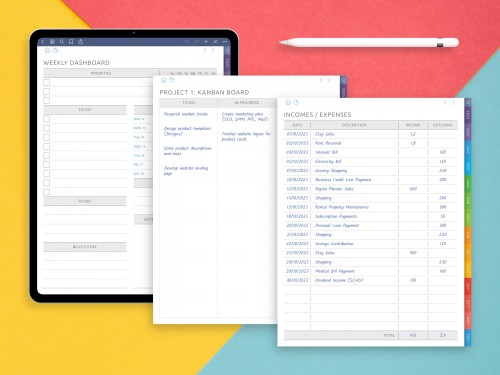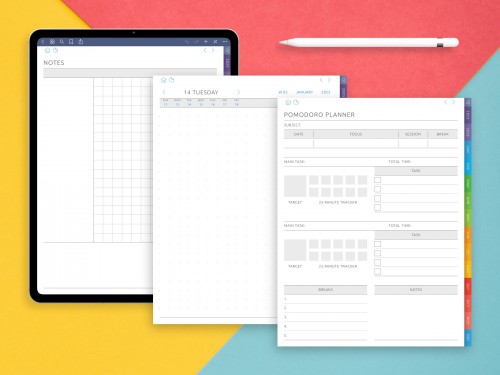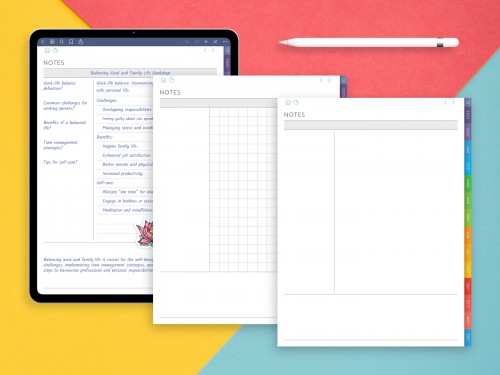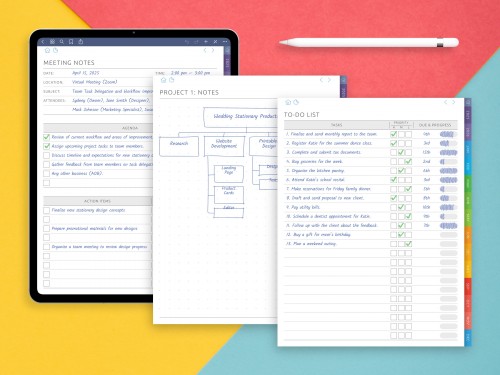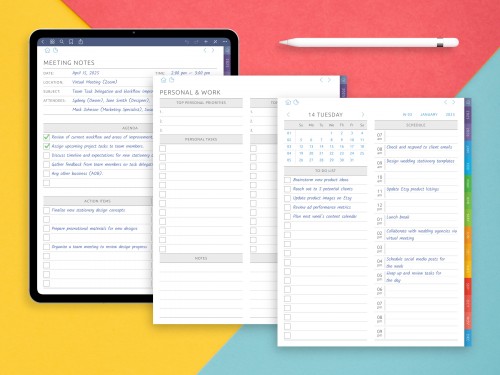How to Take Meeting Notes?
- Why Meeting Notes Are Essential
- Meeting Notes vs Meeting Minutes
- What to Include in Meeting Notes
- Digital vs Handwritten Meeting Notes
- How to Structure Notes Around the Agenda
- Key Elements: Decisions, Action Items, Next Steps
- Best Note-Taking Methods for Meetings
- Templates and Examples
- Tips for Taking Notes More Effectively
The ability to capture and preserve the core of a conversation is invaluable. That’s why taking meeting notes is considered one of the most important soft skills for students, managers, and professionals alike. Meetings, whether they are short daily check-ins or lengthy strategic sessions, involve an exchange of critical points, decisions, and tasks. Without clear documentation, ideas may be forgotten, responsibilities misunderstood, and valuable time wasted repeating discussions.
Knowing the best way to take meeting notes is not just about writing quickly; it’s about learning how to listen actively, identify highlights, and capture the essence of the discussion. Modern workplaces rely on efficient collaboration, and effective meeting notes provide a shared record that ensures everyone is on the same page.
Another reason why this skill matters is accountability. Well-structured notes become a roadmap for follow-up actions, helping participants stay aligned on deadlines and assignments. They also provide a reference for absent team members, ensuring no one falls behind. In other words, taking good meeting notes creates clarity and reduces the need for repetitive discussion in future sessions.
This article explores exactly how to take meeting notes effectively. We’ll examine the difference between notes and minutes, what information to capture, and the most common note-taking methods. We’ll also compare digital and handwritten approaches, review ready-made templates, and provide practical tips for taking meeting minutes that make your notes more actionable. By the end, you’ll know not only how to capture information, but also how to organize meeting notes for long-term success.
Why Meeting Notes Are Essential
The question of why we need notes at all may sound simple, but it is at the heart of understanding taking notes during meetings. Human memory is unreliable, especially during long conversations filled with multiple points and side discussions. Without a written record, even the most attentive participants will forget details within hours. Notes act as external memory, capturing the summary of ideas and turning temporary words into permanent documentation.
One essential reason is decision-tracking. Meetings often involve critical decisions: which project to prioritize, which task to assign, or how to allocate responsibilities. By taking meeting notes, these choices are clearly written down, preventing confusion later. For instance, if two departments discuss budget adjustments, the notes can confirm the exact figures agreed upon, avoiding disputes weeks down the line.
Another purpose is to enable efficient follow-up. After the meeting ends, attendees need to know what actions to take next. Effective meeting notes include clear action items and assignments, so team members can move forward confidently. Without this clarity, projects slow down, accountability fades, and productivity suffers.
Notes also provide a tool for review and recall. Students use lecture notes to prepare for exams; professionals use meeting notes to revisit important highlights before the next strategy session. A well-prepared summary helps improve comprehension and ensures nothing slips through the cracks. In this sense, notes support both immediate efficiency and long-term learning.
It’s equally important to mention their role in communication. Meetings often include multiple participants with different priorities. Taking good meeting notes ensures everyone receives the same information, presented in a structured and objective format. This avoids misunderstandings and strengthens teamwork.
Finally, notes act as historical documentation. Over time, a series of structured notes creates a knowledge base for the organization. These written records provide insight into past decisions, help justify strategic choices, and serve as evidence when evaluating assignments or project outcomes.
In short, taking meeting notes is not just a formality; it is a core practice for ensuring clarity, accountability, and organizational efficiency. Without them, meetings risk becoming aimless conversations. With them, they transform into actionable sessions that drive real progress.
Meeting Notes vs Meeting Minutes
In many organizations, the terms meeting notes and meeting minutes are used interchangeably, but in reality they serve different purposes. Understanding this distinction is key to learning how to take meeting notes effectively and ensuring that every type of documentation serves its proper role.
Meeting Notes: Flexible and Practical
Meeting notes are informal, working documents created to capture the flow of a conversation. They are focused on highlights, discussion points, and immediate action items rather than word-for-word transcripts. Typically, notes are written for the benefit of the participants themselves or the immediate team. They emphasize clarity, helping individuals remember what was said, what needs attention, and what the next steps should be.
That's why there are so many printable Meeting Notes Templates and entire Dated Meeting Notes Digital Planners available, allowing you to store dozens of notes in one place and organize them.
In practice, taking good meeting notes means distilling a conversation into its essentials: the main objectives, major decisions, assigned tasks, and relevant responsibilities. Notes don’t need to follow a strict format, but they should be organized around the agenda to ensure all topics are covered. This makes them quick to produce and easy to adapt for different teams and contexts.
Meeting Minutes: Formal and Structured
Meeting Minutes Templates, by contrast, are formal documents. They are often required in board meetings, compliance reviews, or official corporate gatherings where decisions carry legal or strategic weight. Minutes are more than a personal record, they serve as official documentation that may be shared widely across the company or even outside it.
Good minutes provide a detailed summary of what was discussed, who was present, the decisions made, and the assignments agreed upon. They typically follow a standardized format with sections for meeting agenda, participants, motions, votes, and formal approvals. For this reason, tips for taking meeting minutes often emphasize accuracy, neutrality, and completeness. Unlike notes, minutes are not just tools for review; they are part of an organization’s permanent archive.
Why the Distinction Matters
Mixing up notes and minutes can create serious problems in business contexts. If a team believes their informal notes are official minutes, important decisions may be overlooked or misunderstood. Conversely, if a board relies on rough notes instead of formal minutes, it risks compliance failures or accountability issues.
The best way to take meeting notes is to treat them as tools for efficiency and organization, while recognizing that minutes are tools for governance and accountability. In practice, many companies use both: informal notes for internal follow-up and formal minutes for official documentation.
Key Takeaway
If you’re aiming for speed, flexibility, and personal comprehension, notes are the right choice. If you need accuracy, formality, and historical recording, minutes are essential. Together, they form a complete system for capturing business knowledge. Knowing the difference ensures your team doesn’t waste time duplicating efforts and that every discussion is preserved in the right format for future review.
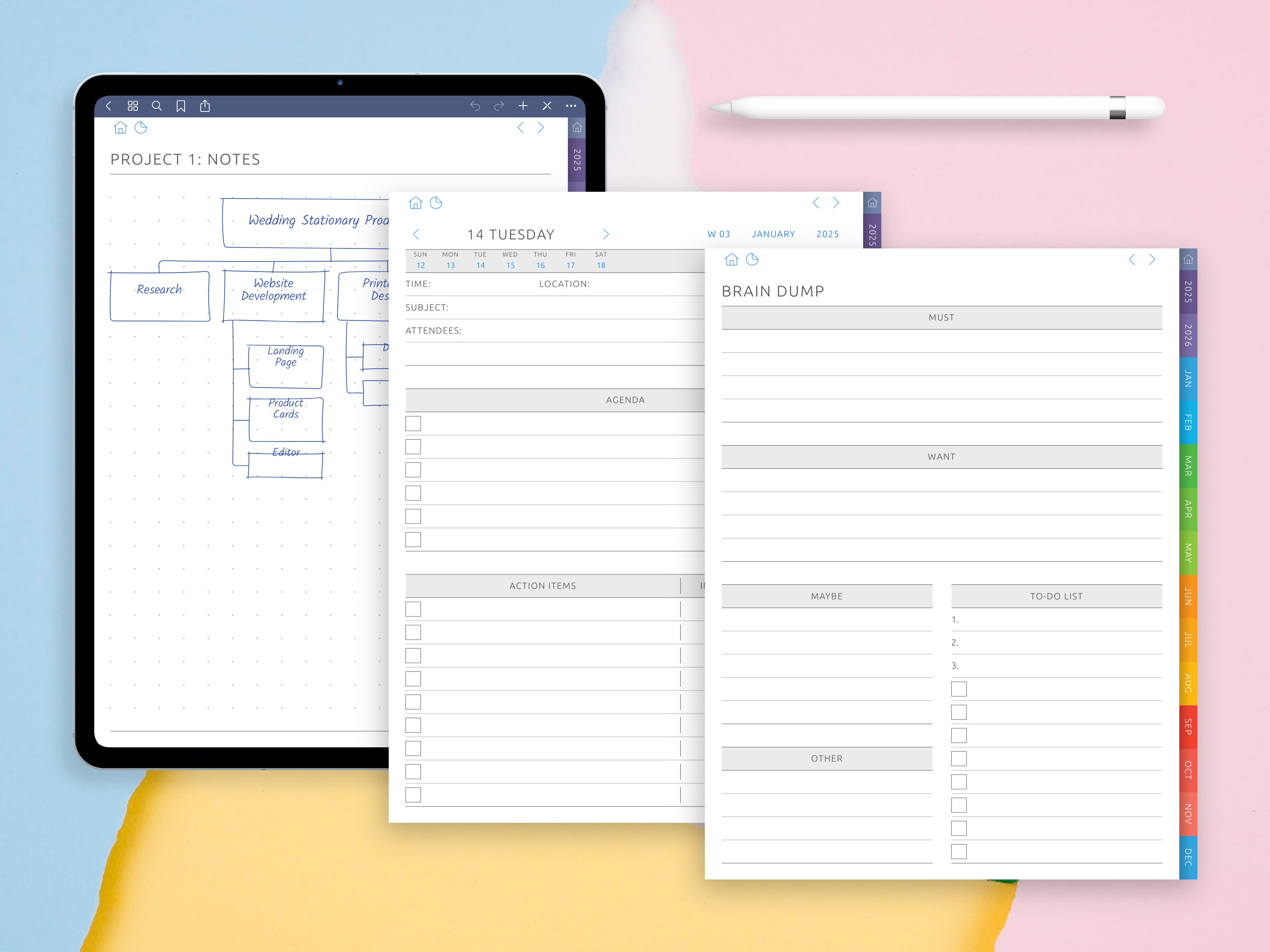
What to Include in Meeting Notes
One of the biggest challenges in taking meeting notes is deciding what actually needs to be captured. Writing everything down word-for-word is not practical, and leaving out too much reduces the usefulness of the notes. The best way to take meeting notes is to focus on the elements that drive clarity, accountability, and action.
Start with the Basics
Every set of effective meeting notes should begin with key contextual details:
- Agenda – the list of topics scheduled for discussion
- Participants – who attended, along with any notable absences
- Objective – the purpose of the meeting, whether it’s strategy, project planning, or a status update
These details provide a foundation for interpreting the rest of the notes. Without them, future readers may lack the clarity needed to recall the purpose of the meeting.
Capture the Core Discussion Points
During the meeting itself, the goal is to capture essential points, not every sentence. Notes should summarize what was said in a way that preserves comprehension without becoming overwhelming. An outline format can be effective: listing main topics with indented bullets for supporting ideas or highlights. This structure ensures organization and makes review easier later.
Record Decisions and Action Items
The most critical element of taking good meeting notes is documenting decisions, assignments, and responsibilities. For each decision, note not only the outcome but also the reasoning if it helps future context. For each task or action item, include:
- What the task is
- Who is responsible
- Any deadlines or milestones
This approach makes the notes actionable and is the best way to track meeting notes across multiple sessions.
Include Key Highlights, Not Everything
Avoid overloading notes with unnecessary detail. Instead, focus on highlights: major decisions, critical risks, and key assignments. Use clear formatting like lists and bullet points to make the most important information stand out. The purpose of notes is not to replace the meeting itself but to provide a summary that participants can return to when they need to refresh their memory.
Add a Closing Summary
An effective set of notes ends with a summary of the meeting. This section recaps the main decisions, lists outstanding tasks, and emphasizes the follow-up steps. It provides quick recall for anyone scanning the document later and ensures participants leave with the same understanding. That’s why professionals must know when they’re taking meeting notes for personal or team use versus when they’re taking notes during meetings to create an official corporate record using meeting notes templates.
Tools for Taking Notes: Digital vs Handwritten
When it comes to taking meeting notes, everyone has their own preference. Some people feel more comfortable writing by hand, while others prefer digital devices and apps. Both approaches have clear strengths and weaknesses.
Handwritten notes are simple and require no battery or internet. A notebook and pen are enough to capture the main points, decisions, and tasks. Writing by hand also supports better listening and comprehension, since you naturally filter out unnecessary details. However, handwritten notes are harder to organize, can be lost, and are difficult to share with colleagues quickly.
Digital tools solve many of these problems. With a laptop or tablet, you can type text, add annotations, highlight discussion points, and structure notes around the agenda. Apps like OneNote, Notion, or Evernote allow you to keep everything in the cloud for easy access and team sharing. For collaboration, this is often considered the best way to take meeting notes because summaries can be distributed instantly after the meeting.
- Handwritten notes: simple, distraction-free, better for listening.
- Digital Meeting Notes: searchable, shareable, and highly organized.
- Hybrid method: write highlights by hand, store them digitally later.
There are some downsides to digital methods. Technology can fail devices run out of battery, Wi-Fi can drop, or apps may freeze. That’s why many professionals use a hybrid approach: capturing quick highlights by hand, then transferring them into digital systems for long-term organization and review.
In the end, there is no universal answer. Short, informal meetings may work well with handwritten notes, while strategic sessions and complex projects benefit from digital solutions. What matters most is that your notes provide clarity, document decisions, and translate them into actionable items that can be tracked and followed up.
Another solution is digital devices specifically designed for handwriting, such as Kindle Scribe or Remarkable. There are planners optimized for these devices, such as the Remarkable Meeting Notes Planner. Using a digital device specifically designed for handwriting will help you. You just need to monitor the battery charge. But in this case, it's easier because batteries on e-ink devices last longer. And you don't use the device for anything other than work.
How to Structure Notes Around the Agenda
One of the most effective ways to create useful notes is to structure them using the Meeting Agenda Template. The agenda defines the flow of the meeting, and your notes should mirror that flow. This prevents scattered writing and ensures your notes remain easy to review later.
Preparation is key. Before the meeting, look at the agenda and set up sections in your notebook or digital app. This ensures every major topic is captured under its own heading. It also makes it easier to track the main discussion points as the conversation progresses.
During the meeting, keep notes concise and focused. Use an outline structure: start with the agenda item, then list supporting ideas, decisions, and tasks underneath. This format speeds up writing, improves clarity, and provides a clean structure for later review.
- Write each agenda item as a heading in your notes.
- Capture related discussion points and highlights below it.
- Document action items, responsibilities, and deadlines clearly.
Pay special attention to action items. For each agenda point, write down what was decided, what assignments were given, and who is responsible. Clear documentation of responsibilities ensures accountability and simplifies follow-up after the meeting.
It’s also a good practice to add a short summary at the end of each agenda section. This helps with comprehension, supports recall, and ensures that all participants share the same understanding of outcomes.
Structuring notes around the agenda is both how to organize meeting notes and one of the best ways to take meeting notes. It improves efficiency, strengthens organization, and transforms rough notes into a clear record that supports follow-up and long-term productivity.

Key Elements: Decisions, Action Items, and Next Steps
Every meeting produces outcomes that should be clearly documented. Without capturing these details, even the most productive discussion can lose its value once participants leave the room. The goal of taking meeting notes is not only to summarize what was said, but also to record the results in a way that drives accountability and progress. The best way to track meeting notes is to focus on three core elements: decisions, action items, and next steps.
Decisions represent the choices made during the meeting. Whether it is approving a budget, changing a project timeline, or agreeing on a new process, these outcomes must be written down. Decisions from the foundation for follow-up and are often used as a reference point in future discussions.
Action items are the practical tasks assigned to specific participants. Without them, decisions remain abstract. Each action item should be clear, measurable, and time-bound. Recording who is responsible and when the task is due ensures that accountability is maintained and no assignment is forgotten.
Next steps provide direction for the team. These include follow-up meetings, progress updates, or checkpoints that keep the momentum going. By listing next steps, you transform the meeting from a one-time conversation into a structured part of an ongoing process.
- Decisions – capture the final agreements made during the discussion.
- Action items – document tasks, responsible people, and deadlines.
- Next steps – define what happens after the meeting and how progress will be tracked.
When these three elements are included in your notes, they create effective meeting notes that move projects forward. This approach supports clarity, strengthens accountability, and ensures that the meeting has a lasting impact rather than becoming just another conversation.
Best Note-Taking Methods for Meetings
There are many ways to approach taking meeting notes, but not every method works for every type of meeting. The best way to take meeting notes depends on the size of the group, the complexity of the agenda, and the desired outcome. By choosing the right method, you can improve clarity, comprehension, and efficiency.
One popular method is using the Cornell Notes Method Template. This divides the page into three sections: a narrow column for cues, a wide column for notes, and a summary section at the bottom. It works well for structured meetings where participants need to highlight key points and recall them later.
The Outline method organizes information hierarchically. Major topics are listed on the left, with supporting details indented below. This method is excellent for meetings with multiple discussion points because it creates a clear structure that is easy to review afterward.
Mind mapping is another effective approach, especially for brainstorming sessions. Starting with the main objective at the center, you branch out into subtopics, decisions, and action items. This visual format helps participants see connections between different ideas.
Finally, the Action method focuses only on outcomes. Instead of recording everything, you write down only tasks, responsibilities, and next steps. This is useful in short, fast-paced meetings where efficiency matters most.
- Cornell method – best for recall and structured review.
- Outline method – ideal for clarity and organization of multiple points.
- Mind mapping – effective for brainstorming and visualizing ideas.
- Action method – focused on tasks, responsibilities, and follow-up.
By selecting the right method, you ensure that your notes are not only accurate but also useful. Whether you are taking notes during meetings for brainstorming, strategy, or project planning, the method you choose will shape the effectiveness of your documentation.
Templates and Examples You Can Use
One of the easiest ways to improve the quality of taking meeting notes is to use ready-made templates. Templates give structure to your writing, help you capture essential information consistently, and reduce the time spent figuring out how to format your notes. For teams, they also bring uniformity, so everyone documents meetings in the same way. This makes collaboration and review much easier.
A well-designed template usually includes space for the agenda, participants, key discussion points, decisions, action items, and a summary. Using a consistent format ensures that no critical detail is missed and that effective meeting notes are produced every time. Templates also make it clear how to organize meeting notes so that they can be shared, stored, and revisited later without confusion.
Digital tools often come with built-in templates or allow you to create your own. Apps like Notion, OneNote, and Evernote support customizable layouts that teams can adapt to their workflows. Cloud-based templates are especially useful because they can be updated in real time and accessed by all participants immediately after the meeting. For those who prefer handwriting, printable outlines and Cornell-style sheets are a simple option.
- Digital Meeting Notes Planner for iPad, Android and other devices – contains dozens of templates, dated, hyperlinked.
- Digital Sectional Meeting Book – hyperlinked Digital Planner with sections that is something like a structured book, where you can hold thousands of notes.
- Printable and Digital Meeting Notes Template – useful for printing and digital devices.
- Cornell Notes Template – divides the page into cues, notes, and summary for structured review.
- Outline Template – organizes discussion points hierarchically with subtopics.
- Decision Tracker – focuses on documenting decisions and linking them to action items.
- Action Items List – emphasizes responsibilities, deadlines, and follow-up tasks.
Using templates saves time, increases clarity, and ensures that your notes capture all the necessary elements. Whether digital or handwritten, the best way to take meeting notes is to rely on a framework that keeps information organized and easy to review later. Templates transform raw documentation into valuable records that drive accountability and team efficiency.
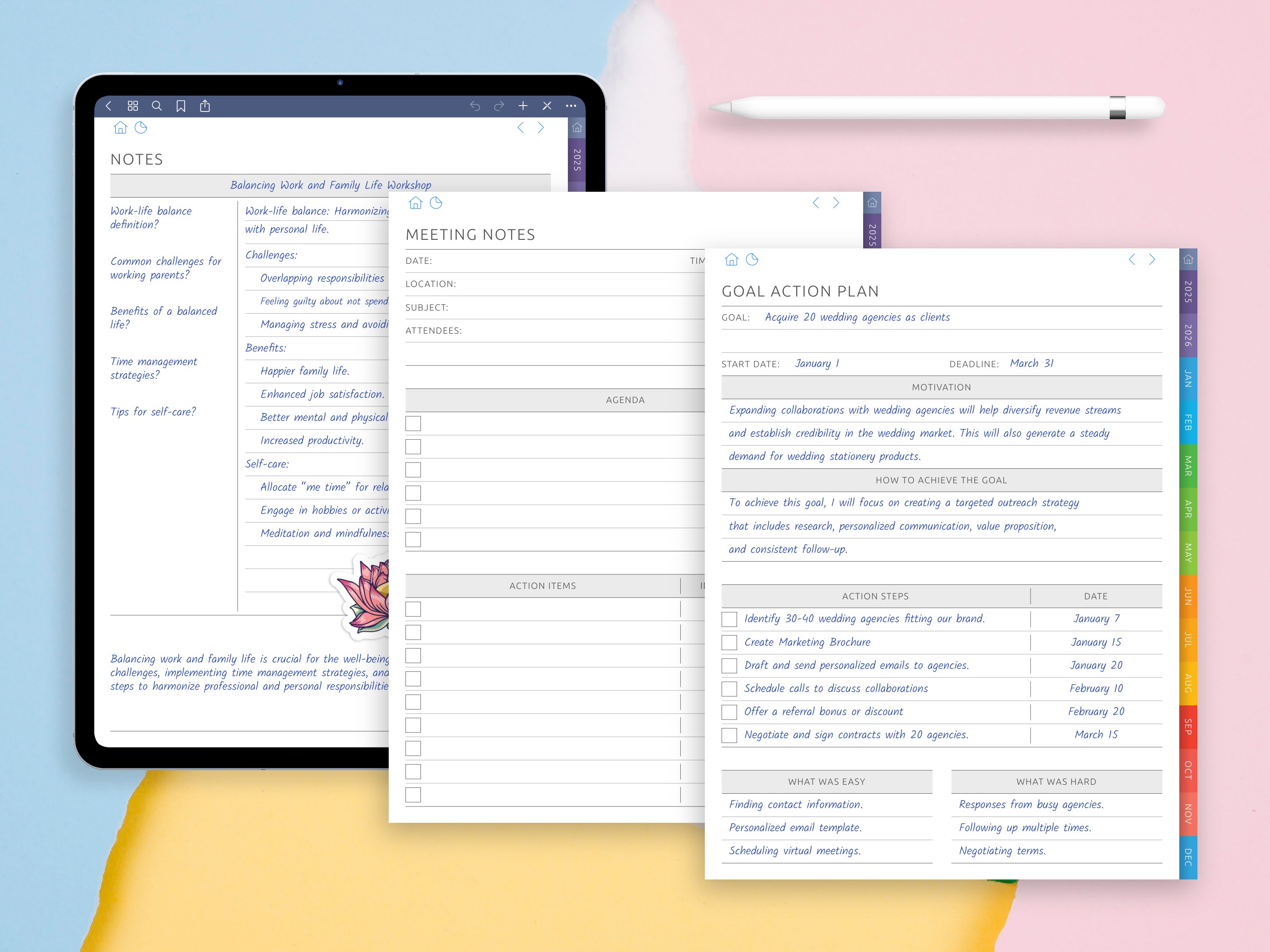
Tips for Taking Notes More Effectively
Even with the right structure and templates, the quality of your notes depends on the way you capture and organize information. Learning how to take meeting notes effectively requires both preparation and practice. The goal is not just to record what happened, but to create effective meeting notes that provide clarity, highlight responsibilities, and support follow-up actions.
Start with strong listening skills. Taking notes during meetings is not about writing every word, but about identifying the most important points. Focus on decisions, action items, and responsibilities rather than side conversations. This approach improves comprehension and makes your notes actionable rather than overwhelming.
Preparation also matters. Review the agenda before the meeting and set up a clear structure for your notes. Whether you are using a digital app or handwriting, having predefined sections will help you stay organized. This is one of the best ways to take meeting notes because it reduces stress during the meeting and ensures consistency.
Another significant habit is to review and refine your notes immediately afterward. Add missing details, clarify unclear phrases, and highlight tasks that need attention. Sharing notes promptly with participants reinforces accountability and helps the team move forward efficiently. This is also the best way to track meeting notes across multiple sessions.
- Listen actively – capture highlights, not full transcripts.
- Prepare – set up your agenda-based outline before the meeting starts.
- Use clear language – write decisions, assignments, and next steps in plain terms.
- Review and share – refine your notes right after the meeting and distribute them quickly.
- Stay consistent – use the same structure and format to make notes easier to follow over time.
By applying these simple practices, you can transform raw documentation into taking good meeting notes that truly add value. Well-prepared and clearly written notes improve efficiency, help with recall, and ensure that no action or decision is lost after the meeting ends.
Learning how to take meeting notes effectively is one of the most valuable skills in any professional environment. Meetings are where important decisions are made, responsibilities are assigned, and strategies are defined. Without clear documentation, even the best discussions risk being forgotten or misinterpreted. That is why taking meeting notes should be seen not as a formality, but as a core part of team communication and project management.
Throughout this guide, we have covered why meeting notes matter, how they differ from minutes, what to include, and the best way to take meeting notes using digital or handwritten tools. We also explored how to structure notes around the agenda, capture action items, and apply proven note-taking methods. Finally, we looked at templates and shared practical tips that make notes clearer, more actionable, and easier to organize.
- Clarity – notes highlight the main discussion points and outcomes.
- Accountability – tasks and responsibilities are assigned and tracked.
- Efficiency – structured notes save time during review and follow-up.
- Organization – consistent formats make notes easier to share and revisit.
The real power of effective meeting notes lies in their ability to turn words into action. By capturing the agenda, decisions, and next steps, you create a record that not only reflects the past but also shapes the future of your projects. Whether you are taking notes during meetings as a manager, a team member, or a facilitator, your documentation can become the roadmap that drives progress and ensures nothing is left behind.
In short, the best way to track meeting notes is to keep them simple, structured, and focused on what matters most. With preparation, active listening, and consistent practice, you will always end meetings with notes that support collaboration, accountability, and success.

